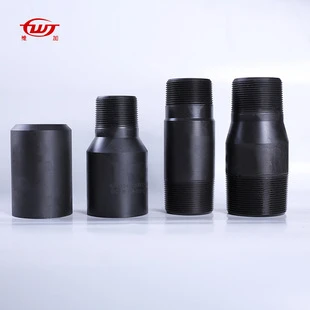- Afrikaans
- Albanian
- Amharic
- Arabic
- Armenian
- Azerbaijani
- Basque
- Belarusian
- Bengali
- Bosnian
- Bulgarian
- Catalan
- Cebuano
- Corsican
- Croatian
- Czech
- Danish
- Dutch
- English
- Esperanto
- Estonian
- Finnish
- French
- Frisian
- Galician
- Georgian
- German
- Greek
- Gujarati
- Haitian Creole
- hausa
- hawaiian
- Hebrew
- Hindi
- Miao
- Hungarian
- Icelandic
- igbo
- Indonesian
- irish
- Italian
- Japanese
- Javanese
- Kannada
- kazakh
- Khmer
- Rwandese
- Korean
- Kurdish
- Kyrgyz
- Lao
- Latin
- Latvian
- Lithuanian
- Luxembourgish
- Macedonian
- Malgashi
- Malay
- Malayalam
- Maltese
- Maori
- Marathi
- Mongolian
- Myanmar
- Nepali
- Norwegian
- Norwegian
- Occitan
- Pashto
- Persian
- Polish
- Portuguese
- Punjabi
- Romanian
- Russian
- Samoan
- Scottish Gaelic
- Serbian
- Sesotho
- Shona
- Sindhi
- Sinhala
- Slovak
- Slovenian
- Somali
- Spanish
- Sundanese
- Swahili
- Swedish
- Tagalog
- Tajik
- Tamil
- Tatar
- Telugu
- Thai
- Turkish
- Turkmen
- Ukrainian
- Urdu
- Uighur
- Uzbek
- Vietnamese
- Welsh
- Bantu
- Yiddish
- Yoruba
- Zulu
Understanding Vacuum Hose Couplings and Their Importance in Automotive Systems
Understanding Vacuum Hose Coupling An Essential Component in Various Applications
In the realm of mechanical and automotive engineering, vacuum hose couplings play a pivotal role. These components, although often overlooked, are crucial for fluid dynamics and the effective functioning of various systems. This article aims to elucidate the importance, functionality, and different types of vacuum hose couplings, underscoring their significance in industrial and automotive applications.
What is a Vacuum Hose Coupling?
A vacuum hose coupling is a specialized connector that links two hoses while maintaining a secure seal to prevent the loss of vacuum pressure. It is designed to facilitate the transportation of air, gases, or fluids in a vacuum state. The integrity of the coupling is vital, as even the slightest leakage can disrupt the system’s efficiency and lead to operational failures.
Importance of Vacuum Hose Couplings
1. Maintaining Vacuum Pressure In many industrial processes such as packaging, food preservation, and chemical processing, maintaining a vacuum is essential to optimize performance, enhance safety, and extend the shelf life of products. A reliable coupling ensures that vacuum pressure is preserved throughout the system.
2. Facilitating Fluid Transfer In automotive applications, vacuum hose couplings are integral in systems that require the transfer of fluids or gases, such as fuel systems, brake systems, and emissions control systems. A dependable connection ensures that these fluids can move seamlessly without leaks, which can cause contamination and hazardous situations.
3. Versatility Vacuum hose couplings are utilized across a variety of industries, including automotive, manufacturing, and even consumer products. Their versatility makes them an essential component in many mechanical assemblies.
4. Safety In applications where toxic or flammable substances are handled, the integrity of vacuum hoses and couplings is critical to ensuring safety. Properly sealed couplings can prevent leakage that could pose health risks or environmental hazards.
Types of Vacuum Hose Couplings
There are several types of vacuum hose couplings, each designed to meet specific requirements based on the application
1. Barbed Couplings These are among the most common types of couplings, featuring a barbed design that grips the inner wall of the hose, creating a tight seal. They are easy to install and typically used in low-pressure applications.
vacuum hose coupling

2. Flared Couplings This type employs a conical flare to create a secure connection. They are especially useful in high-pressure applications as they can withstand considerable stress without leaking.
3. Quick-Disconnect Couplings As the name suggests, these couplings allow for fast and easy disconnection and reconnection, making them ideal for applications that necessitate frequent maintenance or component replacement.
4. Threaded Couplings Designed to use a screw-type mechanism, threaded couplings provide a strong connection suitable for static applications where a permanent fixture is advantageous.
5. Push-to-Connect Couplings These couplings allow for easy connection without the need for tools. They are favored in situations where speed and ease of use are paramount.
Best Practices for Maintenance
To ensure optimal performance and longevity of vacuum hose couplings, regular maintenance is essential. Here are some best practices
- Regular Inspection Periodically check couplings for wear, cracks, or signs of degradation. Early detection of potential issues can prevent costly downtimes.
- Proper Installation During installation, ensure the coupling is securely attached to both ends of the hose. Misalignment can lead to leaks.
- Temperature and Pressure Ratings Ensure that the selected coupling is rated for the specific temperature and pressure of the application to avoid failure.
- Use Compatible Materials Ensure that the materials of the hoses and couplings are compatible to prevent chemical reactions that could weaken the connection.
Conclusion
In summary, vacuum hose couplings are critical components in many mechanical systems, ensuring the efficient transfer of gases and fluids while maintaining necessary vacuum levels. Understanding their various types and applications can help in selecting the appropriate coupling for specific needs. With proper maintenance, these couplings will continue to function effectively, contributing to the reliability and safety of systems across diverse industries. Whether in automotive engineering, manufacturing, or industrial processes, vacuum hose couplings will remain an unsung hero in facilitating seamless operations.
-
Tubing Pup Joints: Essential Components for Oil and Gas OperationsNewsJul.10,2025
-
Pup Joints: Essential Components for Reliable Drilling OperationsNewsJul.10,2025
-
Pipe Couplings: Connecting Your World EfficientlyNewsJul.10,2025
-
Mastering Oilfield Operations with Quality Tubing and CasingNewsJul.10,2025
-
High-Quality Casing Couplings for Every NeedNewsJul.10,2025
-
Boost Your Drilling Efficiency with Premium Crossover Tools & Seating NipplesNewsJul.10,2025







